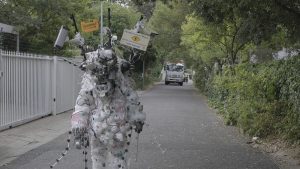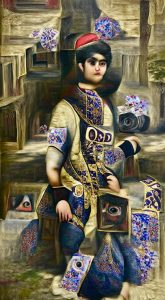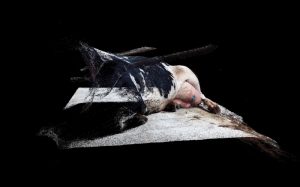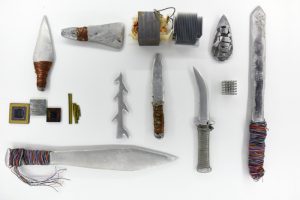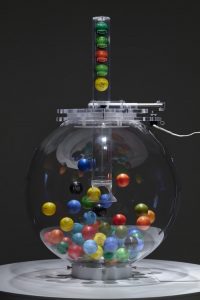Another post long long overdue. This one regards Generator.X – Beyond the Screen, a workshop and exhibition, which highlight the creative potential of digital fabrication and generative systems.
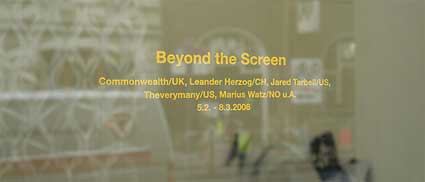
Digital technologies like rapid prototyping, laser cutting and CNC milling enable digital artists, designers and architects to step out of the screen and produce atoms from bits, eliminating many of the limitations of industrial production processes. The technologies are becoming increasingly accessible, pointing to a future where mass customization and manufacturing-on-demand may finally offer alternatives to mass production.
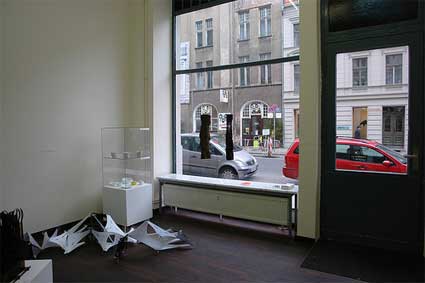
The Generator.X workshop, led by Marius Watz, in the framework of Club Transmediale, took place in January but the project developed are on view until March 8 at the DAM Gallery in Berlin.
When i went to the opening of the show i was lucky enough to be able to ask the designers and artists a few questions in order to understand what was before my eyes. However, the pieces are beautiful enough to make the trip to Tucholskystrasse worth your time. Besides, people in the gallery will be happy to answer your questions.
Imho this is probably the best show in town right now. Demonstration in 3 steps:
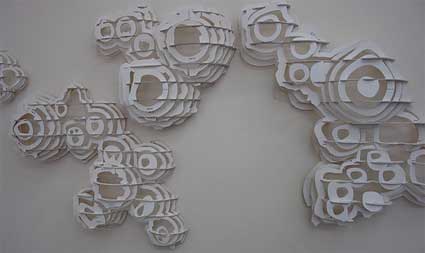 A Week in the life is a 3D visualisation of telecommunications data made of cardboard. The data sculpture represents Andreas Nicolas Fischer‘s movement around his home city, Berlin, and the communications he made with his mobile phone in one week.
A Week in the life is a 3D visualisation of telecommunications data made of cardboard. The data sculpture represents Andreas Nicolas Fischer‘s movement around his home city, Berlin, and the communications he made with his mobile phone in one week.
The aim of the project is to draw attention to the German telecommunications data retention act (Vorratsdatenspeicherung) and the breach of privacy it constitutes. The law requires the telecommunications providers to store the connection data of all customers for 6 months and to make it available to law enforcement agencies upon request.
What can be read from the sculpture is Andreas’ position in the city through the cell sites he used. The density of the cell sites reflects the speed and frequency of his movement within the city. The more often he visited a place, the more cell sites were added to the map.
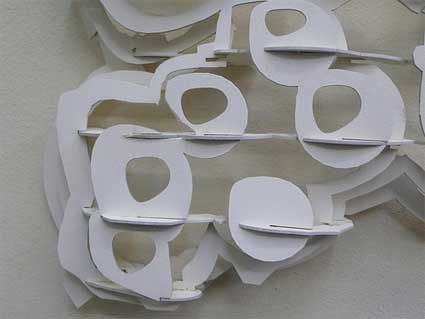
To get the information for the data set, the designer wrote a software for his mobile phone which recorded all the coordinates of the antennae, which he then converted to latitude and longitude. The data collected was parsed with a processing sketch and transformed into a 3d model.
“I then took the model in rhino and contoured it into horizontal and vertical 2d layers, explains Andreas. ‘Then i set the intersections and cleaned the vectors in illustrator. After that i cut the individual parts with the lasercutter. The assembly took me about a day (even though having labeled each part individually beforehand). After that i added two coats of white model paint. ”
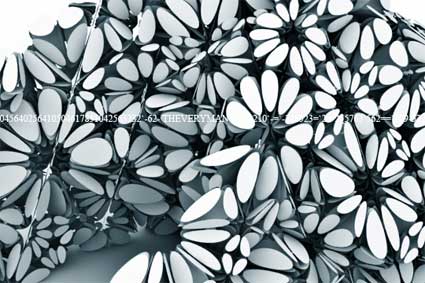 Aperiodic Series
Aperiodic Series
Based on the Aperiodic series, one of their earlier experimentations, Aperiodic_vertebrae
, by Skylar Tibbits and Marc Fornes (theverymany), is a spectacular assembly of nearly 500 flat panels (11 types) all milled within 6 sheets of plastic and linked together using nearly 500 assembly details (more or less all unique!) all laser cut onto 7 sheets of transparent acrylic…
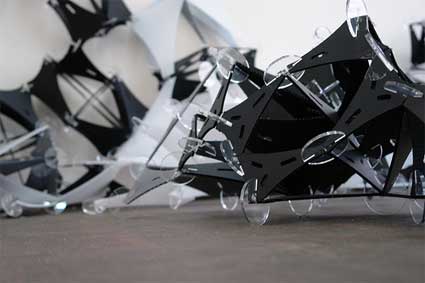
They were assembled by hand over what must have been a very long afternoon…
Foldable fractal, a work by David Dessens. I discovered more of his work during the talk he gave last month at a symposium organized by Marius Watz.
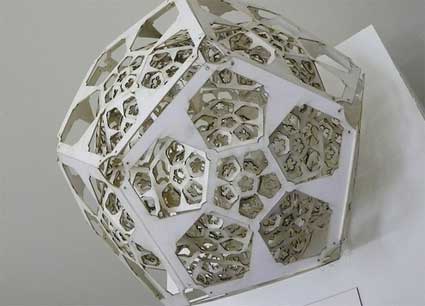
Dessens’ experiments in generating shapes using complex mathematical functions (the SuperFormula!) are beyond impressive.
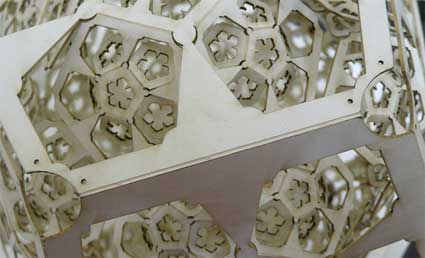 Foldable Fractal (detail)
Foldable Fractal (detail)
Other favourites:
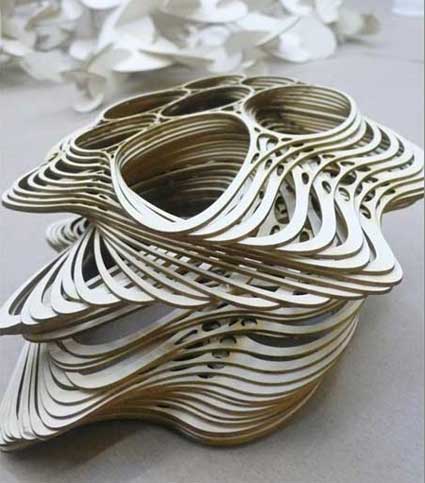 Daniel Widrig‘s Laser cut model
Daniel Widrig‘s Laser cut model
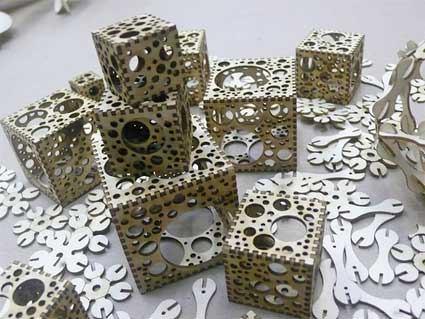 The delicate Cubes and Spheroids of Jared Tarbell
The delicate Cubes and Spheroids of Jared Tarbell
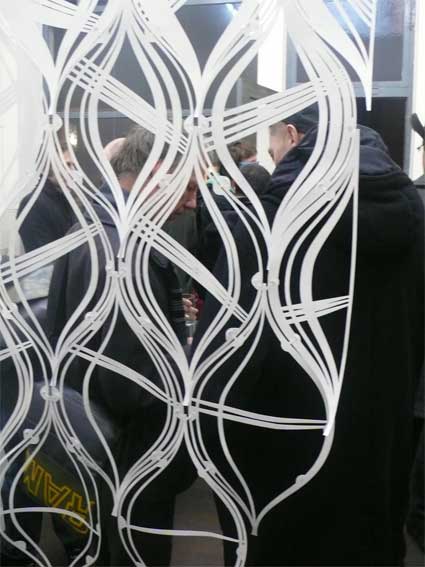 TODO‘s ethereal curtain
TODO‘s ethereal curtain
The show is running at the DAM Gallery Berlin until March 8.
UPDATE: Generator.x 2.0 will open in Turin March 11 as part of the Share festival (via).
I uploaded some images but there are many many more on the Generator.x 2.0 Flickr group.
Blog of the Generator.X – Beyond the Screen workshop.
Related stories: A conversation about exhibiting and selling digital fine art, Designmai – Digitalability exhibition, Rapid Products, Rapid Products II.
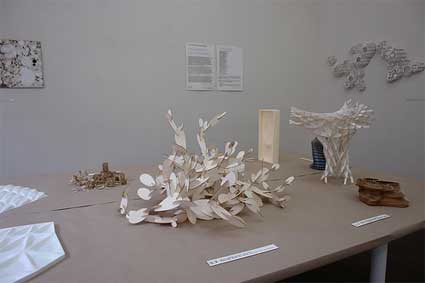
Images 1, 2, 3, 6, 9 and 12 courtesy of Andreas Nicolas Fischer. Image on the homepage: Leander Herzog: Physical Vertexbuffer (Radical Slices based on Perlinnoise).
GeneratorX 2.0 Beyond the Screen at [DAM] Berlin from lambretta on Vimeo

